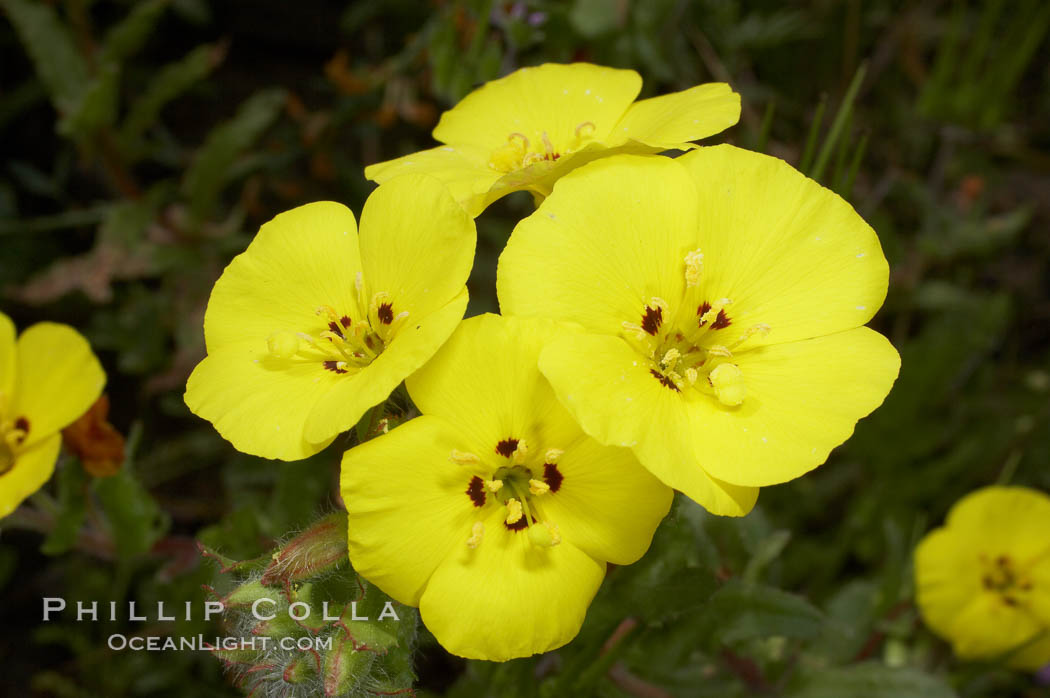Bermuda buttercup (buttercup oxalis), a low growing perennial broadleaf plant with shamrocklike leaves, is found throughout California up to 8200 feet (2500 m). It inhabits agricultural land and other disturbed areas and is a common weed in artichoke fields on the Central Coast and in irrigated landscapes. It is related to, and closely resembles, creeping woodsorrel, Oxalis corniculata. Both species contain variable levels of oxalate compounds that can cause death in livestock when consumed in large quantity. They are attractive but are a nuisance when they spread into gardens or when they infest shrubs. Sometimes Bermuda buttercup is grown as an ornamental.
Bermuda buttercup flowers and blue sky - bermuda buttercup stock pictures, royalty-free photos & images African Wood-sorrel, Oxalidaceae. Coral shaped leaves with dewdrops - bermuda buttercup stock pictures, royalty-free photos & images. Description: This exotic perennial species is from South Africa and has funnel-shaped, yellow flowers with 5 petals. The leaves are clover-like and have leaflets grouped in threes; each is heart-shaped and creased down the middle. The plant contains high levels of oxalic acid making it sour. In Oxalis cernua, known as Bermuda buttercups, with showy yellow flowers, native to southern Africa and naturalized in Florida and the Bermudas. Another yellow-flowered kind is the weedy, creeping oxalis (O. Corniculata are widely naturalized in the Old World.

Bermuda buttercup is a perennial that grows in full sun in cool coastal areas, but inland it grows primarily in semishaded sites. It grows upright and is larger and showier than creeping woodsorrel. It develops from bulbs that sprout and grow in the fall. The plant forms a. Oxalis pes-caprae (buttercup oxalis, Bermuda buttercup, yellow oxalis) is a low-growing perennial (family Oxalidaceae) found along the coast of California, in the Coastal Ranges, and in the Sacramento Valley. Buttercup oxalis occurs in coastal dunes, scrub, oak woodlands, gardens, turf, urban areas, orchards and agricultural fields.
Habitat
Orchards, vineyards, crop fields, grassland, yards, gardens, turf, landscaped areas, and urban areas. Duties of letter box peon.
Seedling
Seedlings are not encountered in California.
Mature plant
A loose basal rosette of leaves up to about 14 inches (35 cm) tall grows from the bulb. Free video converter mac 10.6 8. It has fully subdivided (compound) leaves, each consisting of three heart-shaped leaflets that resemble clover leaves. Leaves are hairless to sparsely hairy, green, often with brown or purplish spots. Stems are located mostly below ground. It can be distinguished from creeping woodsorrel by its more upright growth, larger leaves and flowers, greater number of flowers, and lack of seed capsule.
Flowers
Flowers bloom from November through April. Flowers cluster on the ends of slender leafless stalks and there are less than 20 flowers per cluster. Each flower has 5 bright yellow petals. Bleach 201 english sub.
Reproduction
Reproduces by bulbs and bulbets. Cultivation, soil movement, planting, and the disposal of nursery soil and garden waste disperse bulbs and bulbets.
Related or similar plants
- Creeping woodsorrel, Oxalis corniculata
Bermuda Buttercup Edible
More information
Bermuda Buttercup Oxalis
- Broadleaf ID illustration
- Calflora's distribution map
- For agriculture: UC IPM Pest Management Guidelines
- For gardens and landscapes: UC IPM Creeping Woodsorrel and Bermuda Buttercup Pest Note
